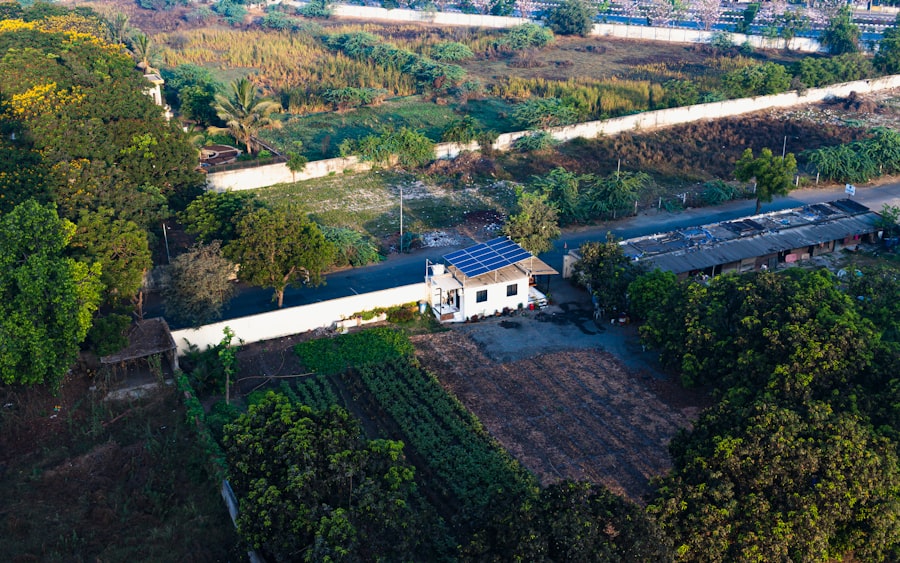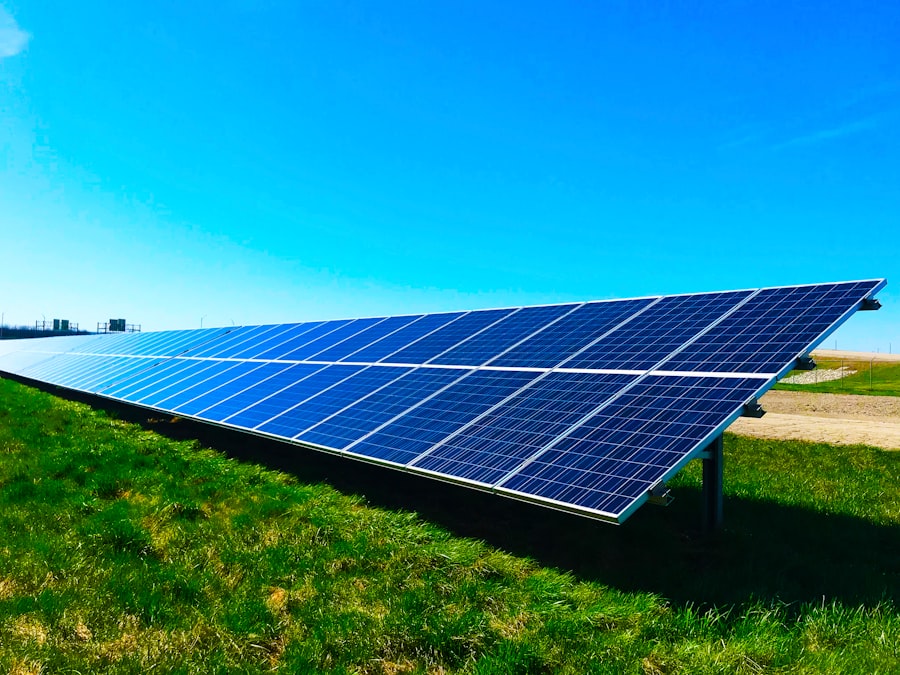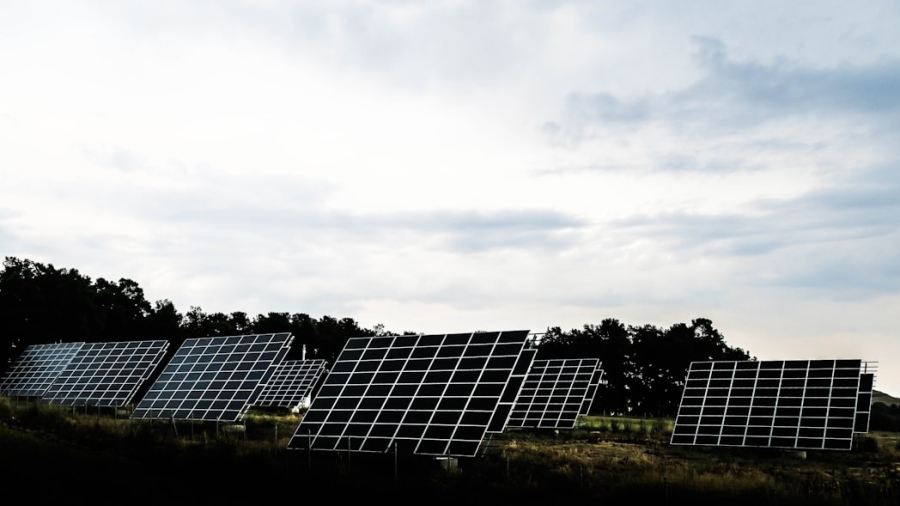The ascent of solar power as a leading renewable energy source has been nothing short of remarkable. Over the past two decades, technological advancements, coupled with a growing awareness of climate change, have propelled solar energy into the mainstream. Initially, solar panels were prohibitively expensive and primarily used in niche applications.
However, as manufacturing processes improved and economies of scale were realized, the cost of solar photovoltaic (PV) systems plummeted. According to the International Renewable Energy Agency (IRENA), the cost of solar energy has decreased by over 80% since 2010, making it one of the most affordable sources of electricity in many parts of the world. This dramatic reduction in price has led to widespread adoption, with millions of homes and businesses installing solar panels to harness the sun’s energy.
Moreover, the rise of solar power has been bolstered by supportive government policies and incentives aimed at promoting clean energy. Many countries have implemented feed-in tariffs, tax credits, and renewable portfolio standards that encourage investment in solar technology. These initiatives not only stimulate job creation in the renewable energy sector but also contribute to energy independence and security.
As a result, solar power is no longer just an alternative energy source; it is becoming a cornerstone of national energy strategies. The increasing efficiency of solar cells, along with innovations such as bifacial panels and solar tracking systems, continues to enhance the viability of solar energy. As we move forward, the integration of solar power into smart grids and its potential for decentralized energy generation will further solidify its role in a sustainable energy future.
Key Takeaways
- Solar power has seen a significant rise in popularity and efficiency, making it a key player in the renewable energy sector.
- Advancements in wind energy technology have led to increased efficiency and cost-effectiveness, making it a viable alternative to traditional energy sources.
- Battery storage is becoming increasingly important in the renewable energy sector, allowing for the storage and distribution of energy from intermittent sources like solar and wind.
- Innovations in biomass and bioenergy are providing sustainable alternatives to fossil fuels, utilizing organic materials to generate power.
- Hydroelectric power continues to play a crucial role in renewable energy, providing a reliable and consistent source of power.
Advancements in Wind Energy
Advancements in Wind Energy Technology
Wind energy has experienced significant advancements that have transformed it into one of the most promising renewable energy sources globally. The development of larger and more efficient wind turbines has played a crucial role in this transformation. Modern turbines can generate electricity even at low wind speeds, thanks to improved blade design and materials that enhance aerodynamics.
Increased Capacity and Offshore Expansion
The capacity of onshore wind turbines has increased dramatically, with some models now exceeding 3 megawatts (MW) per unit. Offshore wind farms are also gaining traction, as they can harness stronger and more consistent winds found at sea. The deployment of floating wind turbines is an exciting frontier that allows for energy generation in deeper waters, expanding the potential for wind energy production.
Enhanced Grid Integration and Energy Management
In addition to technological improvements, the wind energy sector has benefited from enhanced grid integration and energy management systems. Innovations in predictive analytics and real-time monitoring have enabled operators to optimize turbine performance and reduce maintenance costs. Furthermore, advancements in energy storage solutions are addressing the intermittency challenges associated with wind power.
A Key Player in the Transition to a Low-Carbon Economy
By storing excess energy generated during peak wind conditions, these systems ensure a steady supply of electricity even when wind speeds drop. As countries strive to meet ambitious climate goals, wind energy is poised to play a pivotal role in reducing greenhouse gas emissions and transitioning to a low-carbon economy.
The Growing Importance of Battery Storage

As renewable energy sources like solar and wind become more prevalent, the importance of battery storage technology has surged to the forefront of the energy landscape. Energy storage systems are essential for addressing the inherent variability of renewable resources, allowing for a more reliable and stable electricity supply. Lithium-ion batteries have emerged as the dominant technology due to their high energy density, efficiency, and declining costs.
These batteries enable homeowners and businesses to store excess energy generated during sunny or windy periods for use during times of high demand or low generation. This capability not only enhances energy resilience but also empowers consumers to take control of their energy usage. Moreover, large-scale battery storage projects are being deployed alongside renewable energy installations to create virtual power plants that can respond dynamically to grid demands.
These systems can provide ancillary services such as frequency regulation and demand response, further stabilizing the grid. The integration of battery storage with smart grid technology allows for real-time monitoring and management of energy flows, optimizing the use of renewable resources while minimizing reliance on fossil fuels. As research continues to advance battery technologies—such as solid-state batteries and flow batteries—the potential for even greater efficiency and longevity will likely drive further adoption.
The growing importance of battery storage is not just about enhancing renewable energy; it represents a fundamental shift toward a more sustainable and resilient energy future.
Innovations in Biomass and Bioenergy
Biomass and bioenergy have long been recognized as viable alternatives to fossil fuels, but recent innovations are propelling these technologies into new realms of efficiency and sustainability. Biomass refers to organic materials—such as wood, agricultural residues, and waste—that can be converted into biofuels or used directly for heat and power generation. Advances in conversion technologies, such as gasification and anaerobic digestion, have improved the efficiency with which biomass can be transformed into usable energy.
These processes not only produce renewable energy but also help manage waste by converting it into valuable resources, thereby contributing to a circular economy. Furthermore, research into second- and third-generation biofuels is expanding the potential feedstocks beyond traditional crops like corn and sugarcane. Algae-based biofuels, for instance, offer a promising alternative due to their high yield per acre and ability to grow in non-arable land.
Innovations in genetic engineering are also being explored to enhance biomass feedstock characteristics, making them more suitable for conversion into biofuels. As concerns about food security and land use intensify, these advancements could play a crucial role in ensuring that bioenergy remains a sustainable option without competing with food production. The integration of biomass with other renewable technologies—such as co-firing biomass with coal in existing power plants—further illustrates its potential as a transitional solution toward a fully renewable energy system.
The Role of Hydroelectric Power
Hydroelectric power has long been one of the most established forms of renewable energy, providing a significant portion of global electricity generation. Utilizing the kinetic energy of flowing water to produce electricity, hydroelectric plants can range from large-scale dams to small run-of-river installations. One of the key advantages of hydroelectric power is its ability to provide baseload power while also offering flexibility through pumped storage systems that can quickly ramp up or down based on demand fluctuations.
This capability makes hydroelectricity an invaluable asset in balancing intermittent renewable sources like solar and wind. However, the role of hydroelectric power is evolving as environmental concerns regarding dam construction and water resource management come to the forefront. Innovative approaches such as fish-friendly turbines and sediment management techniques are being developed to mitigate ecological impacts while maximizing energy production.
Additionally, there is a growing interest in small-scale hydro projects that can provide localized power without the extensive environmental footprint associated with large dams. As countries seek to diversify their energy portfolios and reduce carbon emissions, hydroelectric power remains a critical component of the renewable energy mix—offering both reliability and sustainability when managed responsibly.
The Emergence of Geothermal Energy

Geothermal Energy: A Reliable and Sustainable Power Source
Geothermal energy is gaining recognition as a reliable and sustainable source of power that harnesses heat from beneath the Earth’s surface. This form of energy is particularly advantageous because it provides a constant supply of electricity regardless of weather conditions or time of day, making it an excellent complement to other renewable sources like solar and wind. Geothermal power plants convert steam or hot water from geothermal reservoirs into electricity, while geothermal heat pumps can be used for direct heating applications in residential and commercial buildings.
Unlocking the Potential of Geothermal Energy
The potential for geothermal energy is vast; estimates suggest that it could supply a significant portion of global electricity needs if fully harnessed. Recent advancements in geothermal technology are expanding its accessibility beyond traditional geothermal hotspots. Enhanced geothermal systems (EGS) involve injecting water into hot rock formations deep underground to create steam for electricity generation. This innovative approach opens up new areas for geothermal development that were previously considered unsuitable due to lack of natural geothermal resources.
Advancements in Geothermal Technology
Research into low-temperature geothermal applications is paving the way for widespread adoption in heating applications across various sectors. As countries look for reliable baseload power options that align with their climate goals, geothermal energy stands out as a promising solution that can contribute significantly to a sustainable energy future. With its ability to provide constant power and reduce greenhouse gas emissions, geothermal energy is poised to play a vital role in the transition to a cleaner and more sustainable energy mix.
The Impact of Smart Grid Technology
The advent of smart grid technology is revolutionizing how electricity is generated, distributed, and consumed across the globe. By integrating digital communication technologies with traditional electrical grids, smart grids enable real-time monitoring and management of electricity flows, enhancing efficiency and reliability. One of the most significant benefits of smart grids is their ability to facilitate the integration of diverse renewable energy sources into the existing infrastructure.
With advanced metering infrastructure (AMI) and demand response capabilities, consumers can actively participate in managing their energy usage while contributing to grid stability. Moreover, smart grid technology enhances resilience against outages by enabling utilities to quickly identify issues and reroute power as needed. This capability is particularly crucial as extreme weather events become more frequent due to climate change; smart grids can help mitigate disruptions by allowing for faster recovery times.
Additionally, innovations such as microgrids—localized grids that can operate independently or in conjunction with the main grid—are becoming increasingly popular for enhancing community resilience and promoting local renewable generation. As smart grid technology continues to evolve, it will play an essential role in shaping a more sustainable and efficient energy landscape.
The Influence of Policy and Investment on Renewable Energy
The trajectory of renewable energy development is heavily influenced by policy frameworks and investment strategies at both national and international levels. Governments play a pivotal role in shaping the renewable energy landscape through regulations, incentives, and funding initiatives aimed at promoting clean technologies. Policies such as tax credits for renewable installations, renewable portfolio standards (RPS), and international agreements like the Paris Accord create an environment conducive to investment in renewables.
These measures not only stimulate market growth but also signal long-term commitment to transitioning away from fossil fuels. Investment trends further underscore the importance of policy support in driving renewable energy adoption. As institutional investors increasingly recognize the financial viability of renewables—often viewing them as lower-risk assets—capital flows into this sector have surged dramatically over recent years.
Public-private partnerships are emerging as effective mechanisms for financing large-scale renewable projects while leveraging private sector expertise and innovation. Additionally, international cooperation on technology transfer and capacity building is essential for accelerating renewable deployment in developing countries where access to clean energy remains limited. Ultimately, the interplay between policy frameworks and investment strategies will determine how swiftly we can transition toward a sustainable global energy system that prioritizes environmental stewardship while meeting growing energy demands.
While exploring the future of green technology and renewable energy trends, it’s also essential to consider how personal technology is adapting to these eco-friendly initiatives. A relevant discussion can be found in the review of Huawei smartwatches, which are incorporating more sustainable materials and energy-efficient features. To learn more about how these devices are aligning with green tech trends, you can read the full article here. This review provides insights into how consumer electronics are not just improving in functionality but are also becoming part of a larger movement towards sustainability.
FAQs
What is renewable energy?
Renewable energy is energy that is collected from renewable resources, which are naturally replenished on a human timescale, such as sunlight, wind, rain, tides, waves, and geothermal heat.
What are the current trends in renewable energy?
Some current trends in renewable energy include the increasing use of solar and wind power, advancements in energy storage technology, the development of smart grids, and the growing investment in renewable energy projects.
What is the future of green tech in renewable energy?
The future of green tech in renewable energy is expected to involve further advancements in energy storage, increased efficiency of solar and wind technologies, the integration of renewable energy into existing infrastructure, and the development of new renewable energy sources.
What are the benefits of renewable energy?
The benefits of renewable energy include reduced greenhouse gas emissions, improved air quality, energy security, job creation, and economic growth.
What are the challenges facing renewable energy?
Challenges facing renewable energy include intermittency of renewable sources, energy storage limitations, high initial costs, and the need for supportive policies and regulations.

